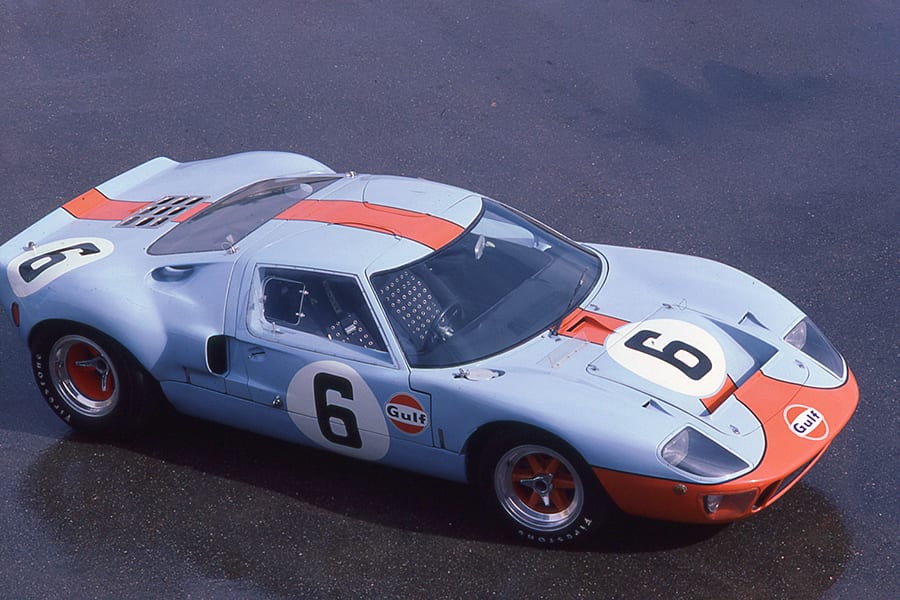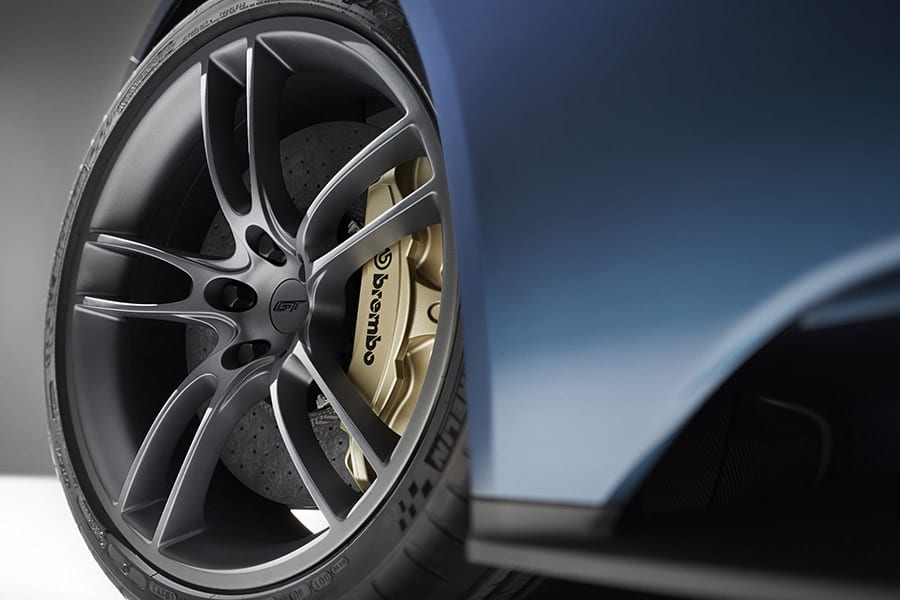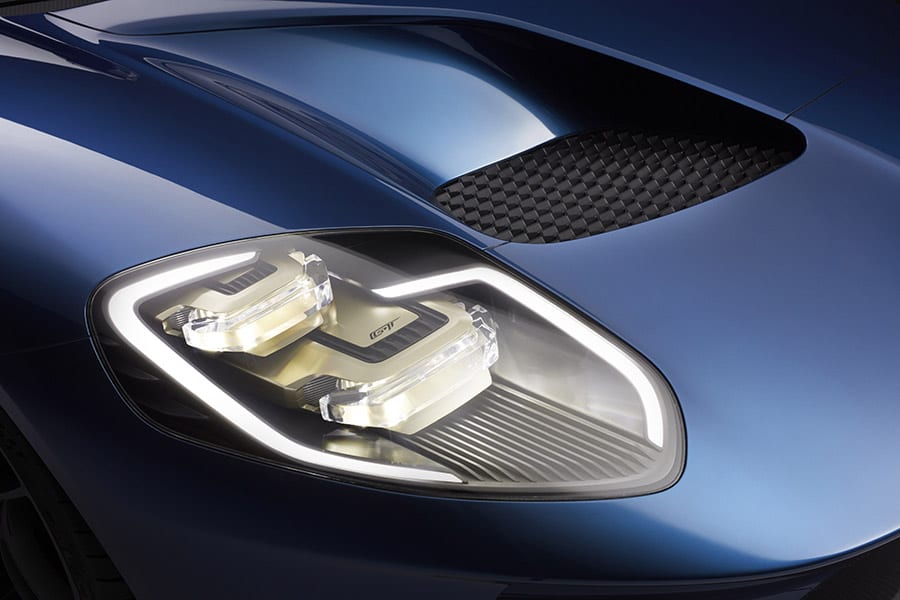Ford GT is Back!

It was a shock. These days it’s unusual for an automaker to present a completely unexpected new model at an auto show, but Ford did just at Detroit’s 2015 North American International Auto Show. Onto the stage rolled a low, blue sports car and its name? Ford GT.
The crowd was stunned.
Just saying “Ford GT” opens up years of history. GT40s winning at Le Mans. Ford GT production cars from the mid-2000s bringing impressive auction prices. So what’s with the new GT?
Ford claims the next-generation GT will be in production late in 2016 to celebrate the automaker’s 1-2-3 finish in the 1966 24 Hours of Le Mans.
Naturally the car’s exterior has been shaped and fine tuned in the wind tunnel. We’re told the design will include a deployable rear spoiler. The cabin will feature upward-swinging doors.
Aiming at an impressive horsepower-to-weight ratio, the GT’s body, passenger cell and structure will be formed in carbon fiber. Aluminum subframes will carry the front and rear suspension plus the drivetrain. Those pushrod suspensions will feature torsion bars.
Not surprisingly, Ford’s new mid-engine GT will be powered by a twin-turbo, direct-injected EcoBoost V-6 producing more than 600 horsepower. This will be a development of the EcoBoost V-6 that powered the 2014 12 Hours of Sebring winner. The transaxle will house a 7-speed dual-clutch gearbox.
While production of the new Ford GT in 2016 would commemorate 50 years since that significant Le Mans win, it’s doubtful the car could be homologated to compete that year. Then again, Ford has a wide window for the new GT’s Le Mans debut to coincide with one of its French wins: 2017, 2018 or 2019. Dan Gurney and A.J. Foyt were victorious there in 1967 with the GT40 Mk IV. John Wyer’s J.W. Automotive Engineering, Ltd took overall in 1968 and 1969 with the same GT40, chassis No. 1075.
Revs Institute’s Collier Collection has a pair of 1966 GT40s that demonstrate Ford’s two approaches to winning in Europe.
One wears serial number 1049 and has a 4.7-liter small-block V-8, back then called the 289 engine. This was Ford’s initial approach to Le Mans, but it was quickly apparent they needed more power and created the GT40 Mk II with a 7.0-liter V-8. Long-distance race expert John Wyer thought, however, that the mid-engine race machine could use the smaller V-8. GT40 1049 proved his point at the 1967 Daytona 24 Hours as it finished 6th overall, highest placed Ford GT, one spot ahead of a big-block Ford Mk II. Wyer’s thinking would prove successful again in 1968 with a rules change that earned Ford the World Manufacturers’ Championship with small-block GT40s, plus repeat wins at Le Mans that year and in 1969 with the same GT40, chassis No. 1075.
The other GT40 in Revs’ Collier Collection is a Mk II-B version with Ford’s 7.0-liter big-block V-8. While the 1-2-3 winners in 1966 were Mk-IIs, for 1967 Ford made an upgrade to a more powerful 500-horsepower Mk II-B specification.
In the Collier Collection car’s case, it also created a race car with two chassis numbers. Such was the arcane world of race cars at the time. This GT40 began life as Mk II-B chassis No. 1031, which failed to finish at Le Mans in 1967. So did GT40 Mk II-B chassis No. 1047. After the race, 1031 was refurbished and renumbered as chassis No. 1047. Hence the collection refers to it as No. 1031/1047.
Odd indeed, but the amalgam machine ended its career with a victory two weeks after Le Mans in 1967. The 12 Hours of Reims started at midnight and at noon the next day, 1031/1047, entered by Ford France and driven by Frenchmen Guy Ligier and Jo Schlesser, was seven laps ahead of the 2nd place car, a Ferrari 365 P2. With that, it became the last Ford GT40 Mk II and the only in Mk II-B spec to win a race.
Quite a heritage for the 2016 Ford GT.







